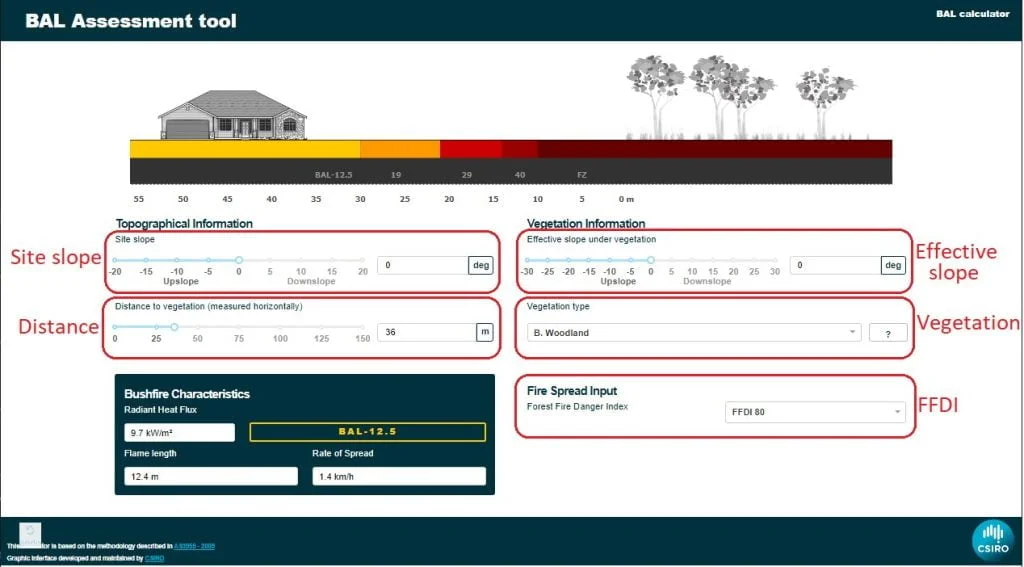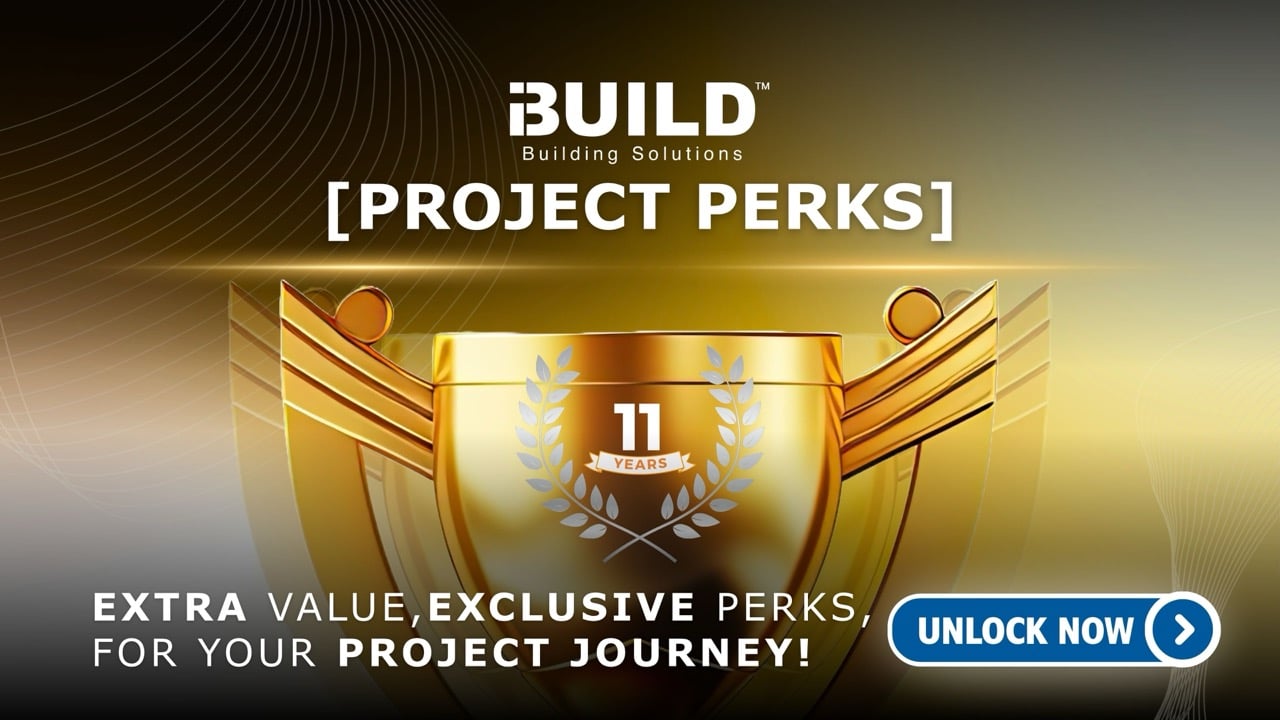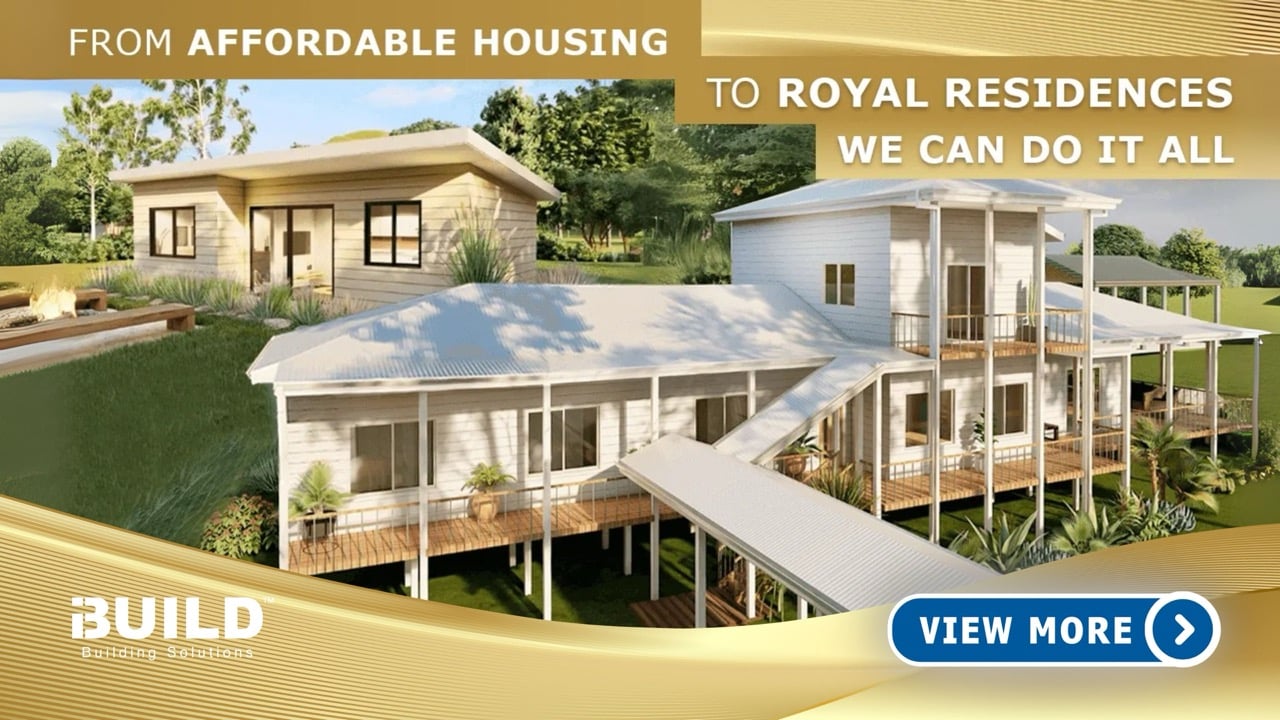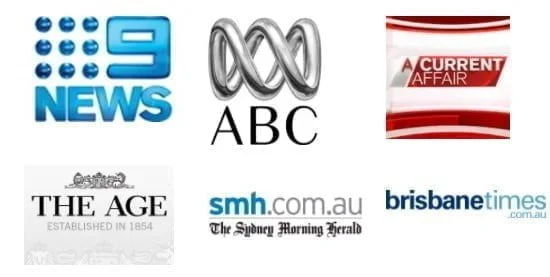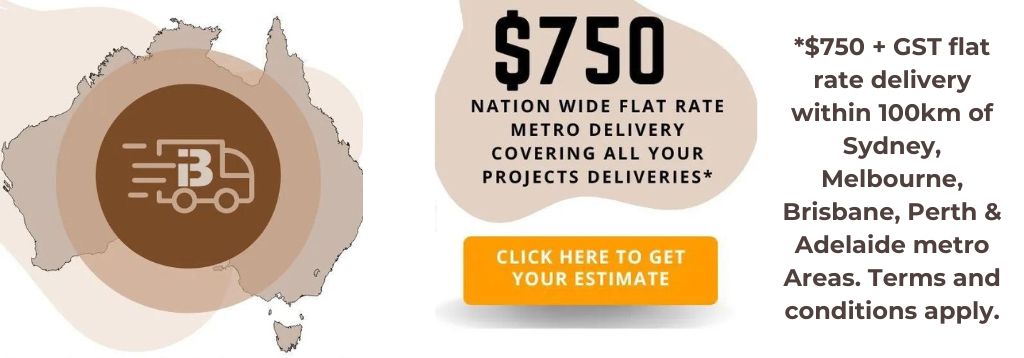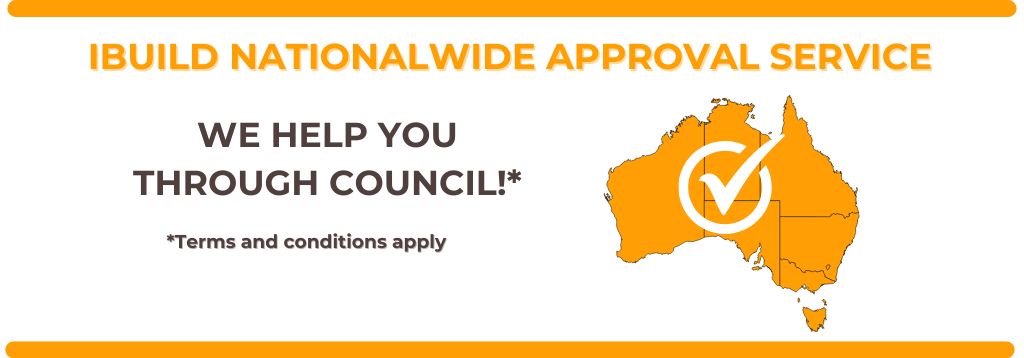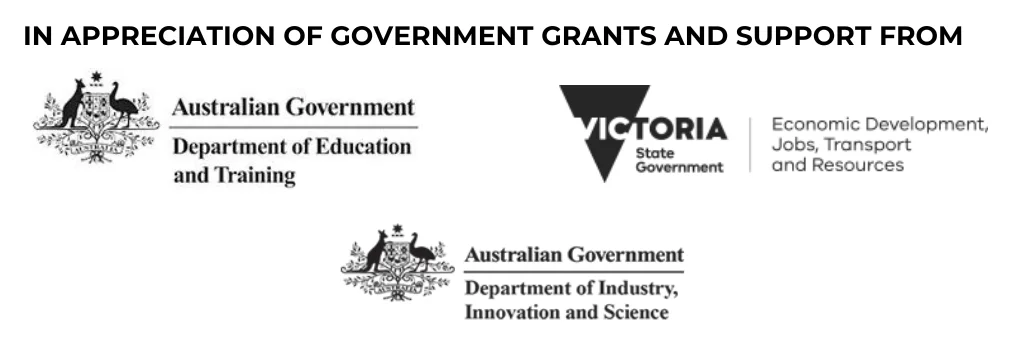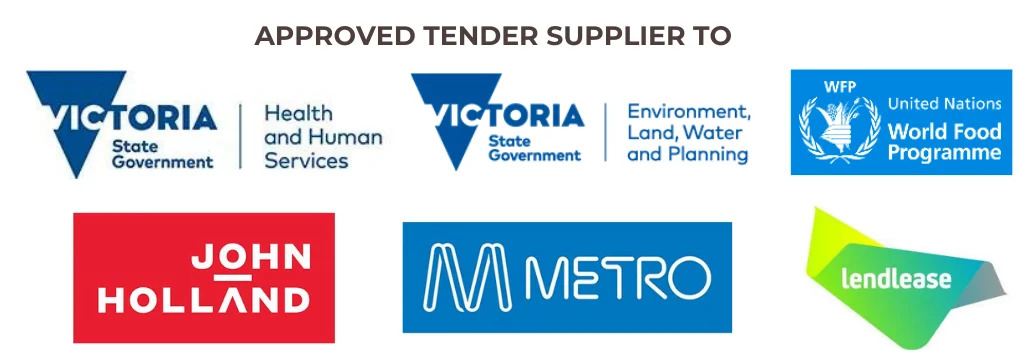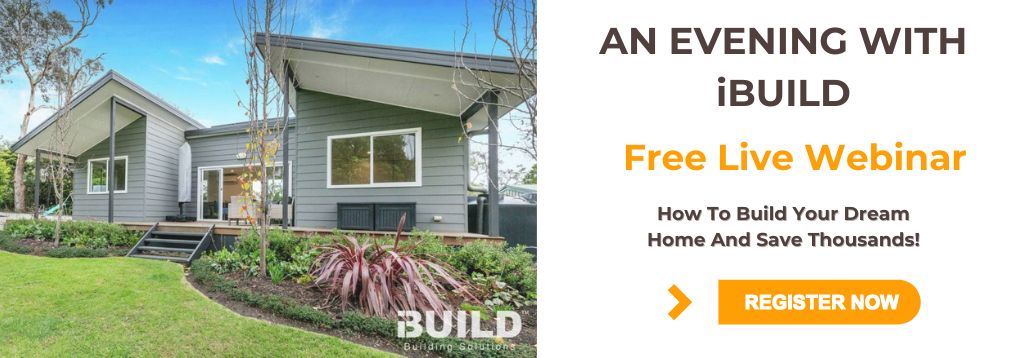WHAT IS BUSHFIRE ATTACK LEVEL
A Bushfire Attack Level (BAL) is a rating that assesses the potential risk and severity of a bushfire impacting a specific property. These ratings are based on the likelihood of a bushfire occurring and the potential heat and ember exposure the property may face.
CALCULATE YOUR PROPERTIES OWN BUSHFIRE ATTACK LEVEL BY CLICKING THE IMAGES BELOW
HOW ARE BAL RATINGS DETERMINED?
To determine the BAL rating for a property, a site assessment is conducted by a qualified professional known as a Bushfire Consultant or Assessor. This assessment will start by taking into account the areas the Forest Fire Danger Index (FFDI – often shortened to FDI for simplicity) it is the regulatory starting point in assessing bushfire risk. The index estimates the fire danger on a given day based on records of dryness (taking into account rainfall and evaporation) plus observations of temperature, humidity and wind speed.
The assessment will also take into account various other factors including the type and density of surrounding vegetation, the slope of the land, the proximity to known bushfire-prone areas, and the prevailing weather conditions in the region.
The assessor will do this by evaluating the property’s vulnerability to ember attack, radiant heat, and direct flame contact.
FDI CHART

(Australian Institute of Architects 2019)
THE BAL RATING SCALE
Once a bushfire attack level assessor has completed their assessment they will then allocate the property a bush fire attack level rating based on the scale that consist of six levels each representing a different level of risk:
- BAL-LOW: Properties in this category are considered to have a low risk of bushfire attack. There is minimal risk of direct flame contact, but some risk of ember attack.
- BAL-12.5: This rating indicates a moderate risk of bushfire attack. There is an increased risk of ember attack and a moderate risk of direct flame contact.
- BAL-19: Properties with this rating have a high risk of ember attack and a high risk of direct flame contact.
- BAL-29: A BAL-29 rating signifies a very high risk of ember attack and a very high risk of direct flame contact.
- BAL-40: Properties with a BAL-40 rating face an extreme risk of ember attack and a very high risk of direct flame contact.
- BAL-FZ (Flame Zone): The highest rating, BAL-FZ, is assigned to properties that are in or very close to the path of an extreme bushfire. These properties are at the greatest risk, with the potential for direct exposure to flames and extreme heat.
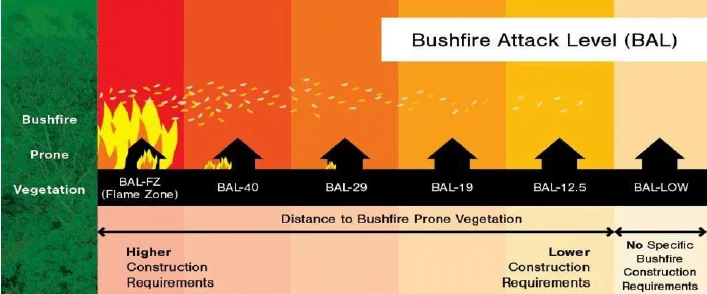
(Australian Institute of Architects 2019)
WHY ARE BAL RATINGS IMPORTANT?
- Safety: The primary concern is the safety of the occupants. A higher BAL rating indicates a higher risk of bushfire attack, prompting the need for more robust construction and safety measures to protect lives.
- Property Protection: BAL ratings help property owners make informed decisions about measures they can take to safeguard their homes and assets from bushfires. This may include using fire-resistant building materials, installing ember screens on windows, and creating defensible spaces around the property.
- Building Regulations: Local building codes and regulations often require compliance with specific construction standards based on the BAL rating. This ensures that buildings are designed and constructed to withstand potential bushfire threats.
- Insurance: Insurance companies may take BAL ratings into account when determining premiums for properties in bushfire-prone areas. A higher rating could lead to higher insurance costs.
